Best Furikake Seasoning: Most Popular Brands & Flavors
The best furikake seasoning combines flavors to get to the most flavorful dish.
Japanese cuisine is based on the ‘rules of five’ that emphasize variety and balance, and the five flavors – bitter, sour, salty, spicy, and sweet in every meal is one of them.
Getting all of that onto your plate with just the right seasoning is key. That’s why I’ve looked for the best furikake brands so you can get that authentic Japanese taste and balance.
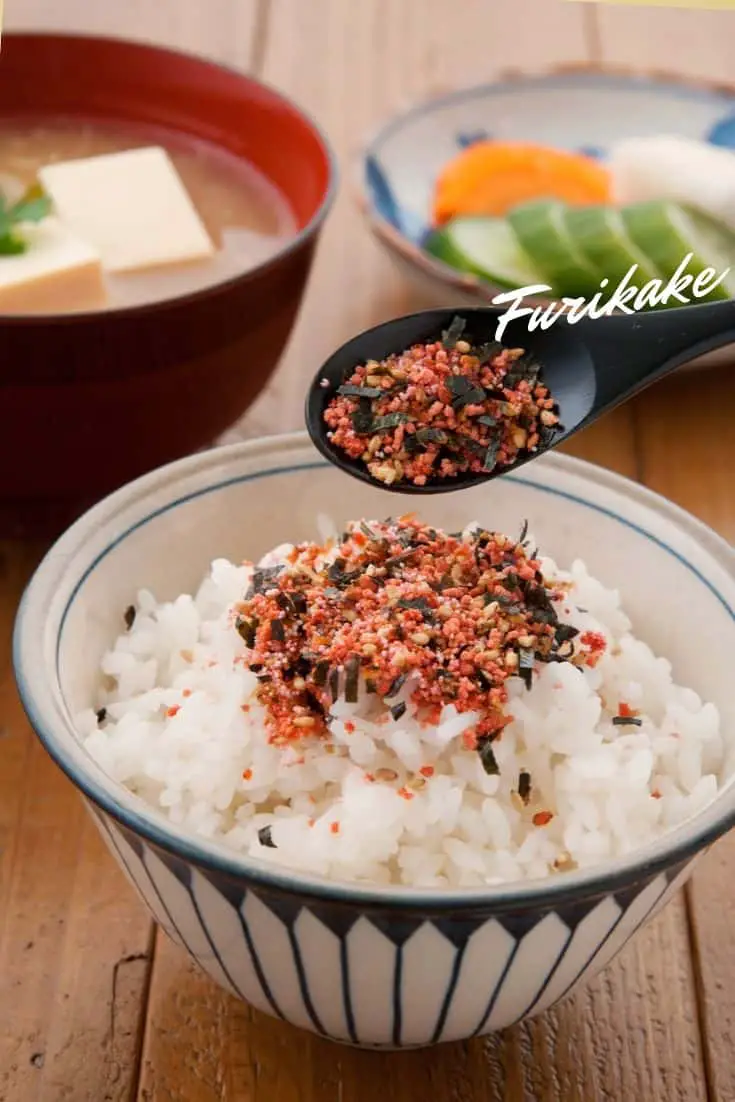
The best traditional flavoring comes from this Nori Fume Furikake Rice Seasoning. With a salty crunch, you can use it on so many things, from rice to a tuna steak and even your onigiri rice balls.
Which furikake seasoning should you be stocking in your kitchen? Read on for my pick, and to get some delicious recipes.

Check out our new cookbook
Bitemybun's family recipes with complete meal planner and recipe guide.
Try it out for free with Kindle Unlimited:
Read for freeIn this post we'll cover:
Best furikake seasoning to buy
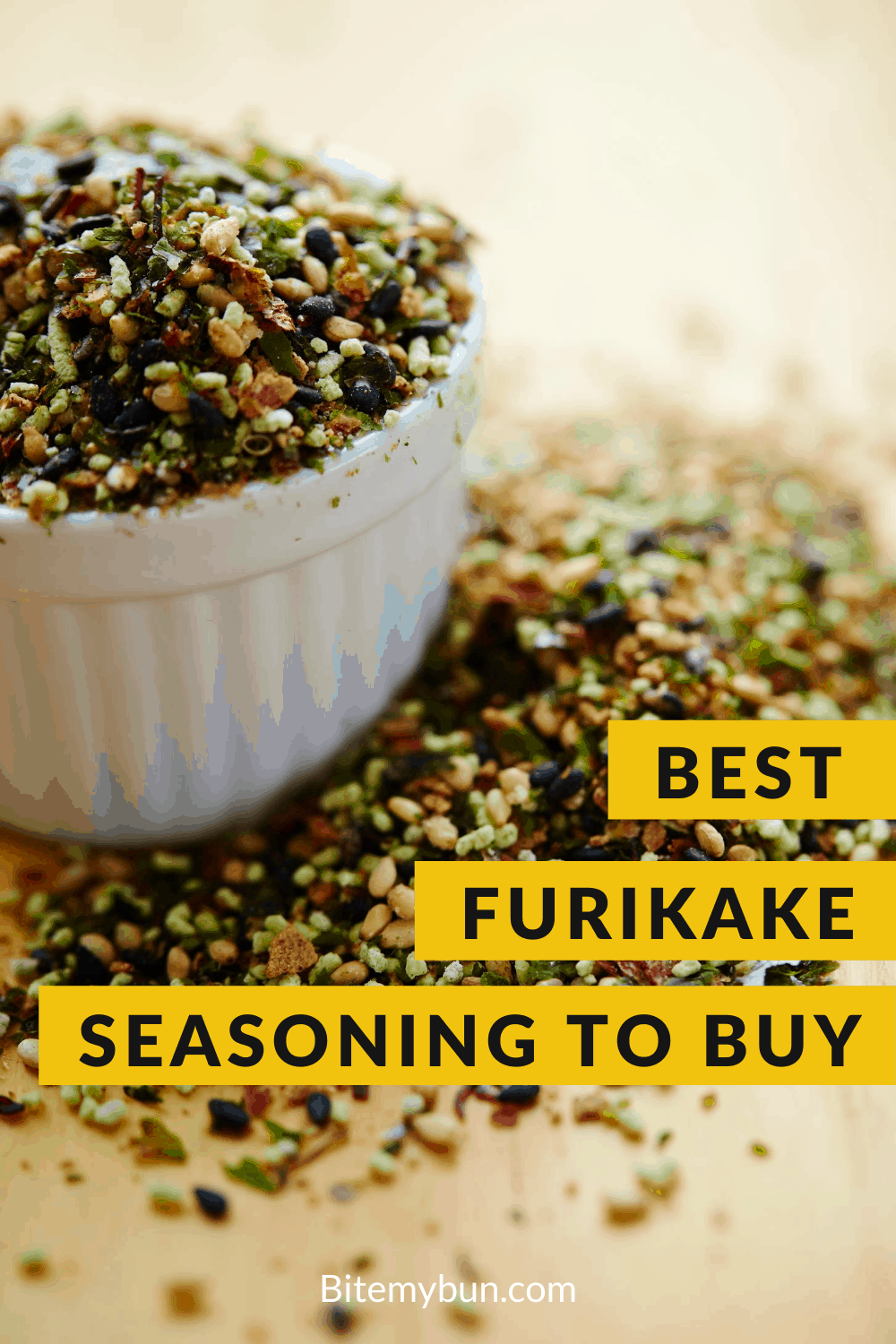
It can be a little daunting to choose the best brand of furikake, especially if you are buying it for the first time.
You can consult any of your Japanese friends or someone who uses furikake regularly, but if you don’t know anyone who can help you, read on.
Here, I review some of the best furikake seasonings I have tried recently. The good news – I liked each and every one of them! I’ll talk about them all here. I hope that this section will help you find the furikake seasoning you are looking for.
Let’s get started.
Nori Fume Furikake Rice Seasoning
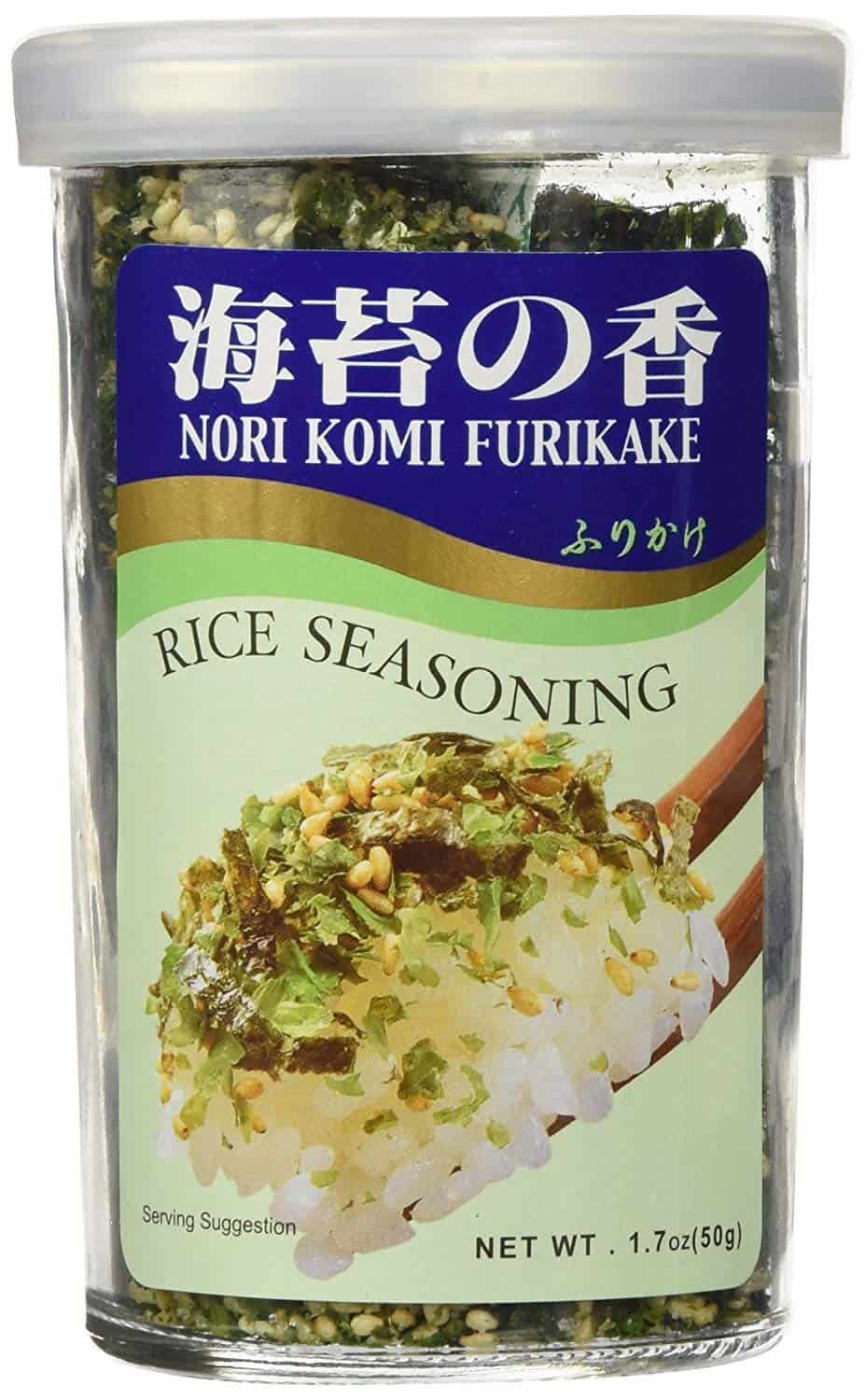
If you are looking for a furikake seasoning with a strong seaweed flavor, I recommend you go with this brand.
It is ideal for rice dishes. The seasoning contains crunchy seaweed granules and sesame seeds mixed with a bit salty and sweet flavor.
JFC Salmon Fumi Furikake Rice Seasoning
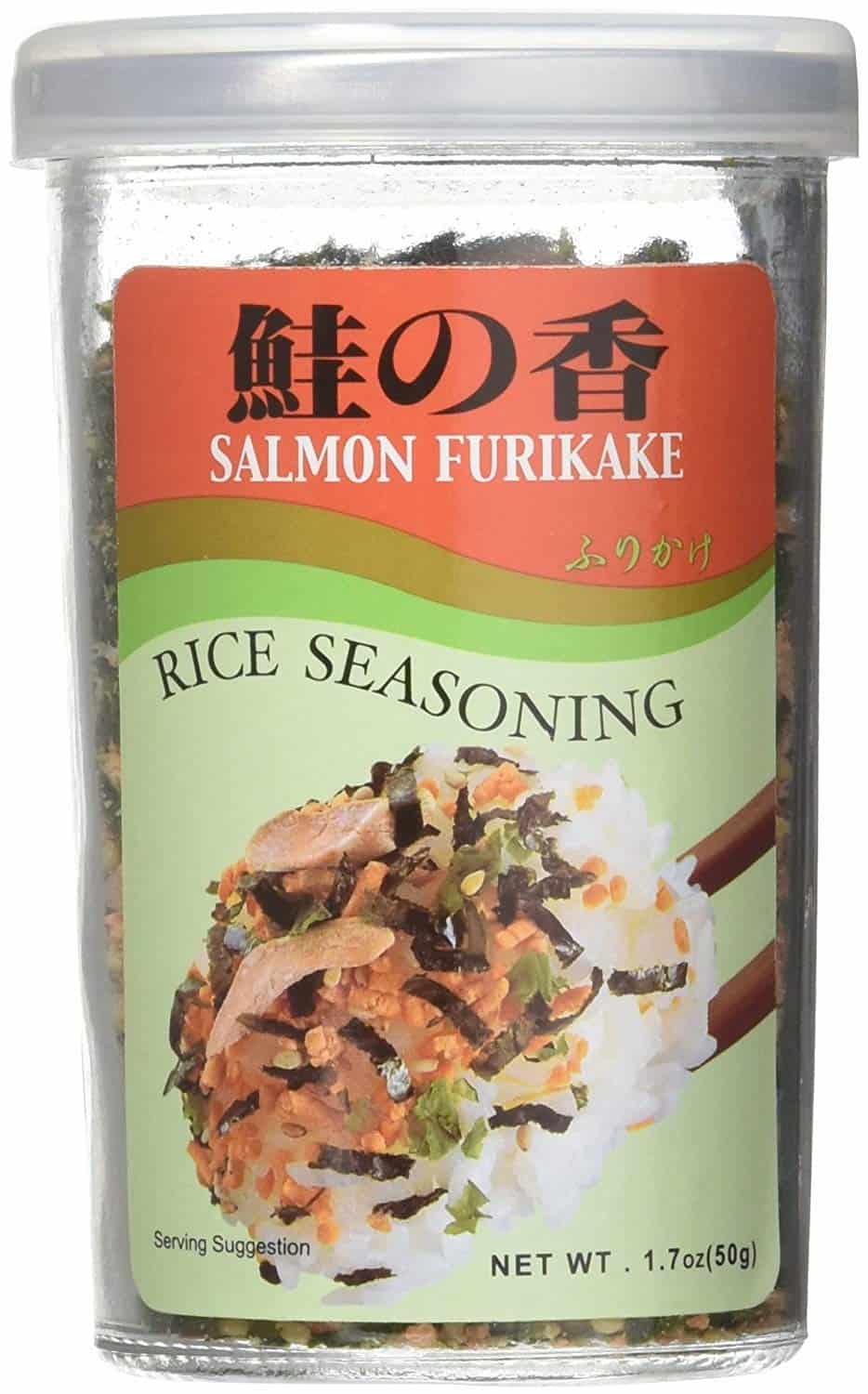
This furikake seasoning contains a mixture of ingredients including crunchy seaweeds, shredded salmon, roasted sesame seeds, and other Japanese seasonings for giving it a tangy flavor.
It is a perfect furikake flavor for those who love eating fish and other kinds of seafood. You can also use it as a topping a variety of meat dishes and rice.
You can buy it here from Amazon
Ajishima Wasabi No Ka
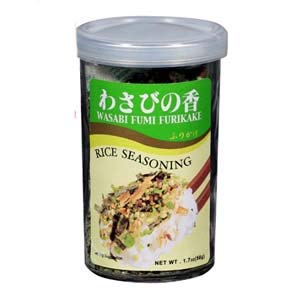
If you have a special love for spicy food and want to make your simple rice dish colorful with a spicy aroma, you can always go with wasabi fumi furikake.
It is a mixed rice seasoning that contains wasabi as the main ingredient along with a combination of crunchy seaweeds, sesame seeds, dried vegetable bits.
JFC Seto Fumi Furikake
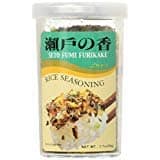
Seto Fumi furikake seasoning is rice seasoning that is known for its classic Seto furikake flavoring.
Seto is a Japanese city from which this furikake flavor originated. It includes a mixture of bonito flakes, seaweed bits, and sesame seeds.
Best Furikake blend: Muso Yuzu
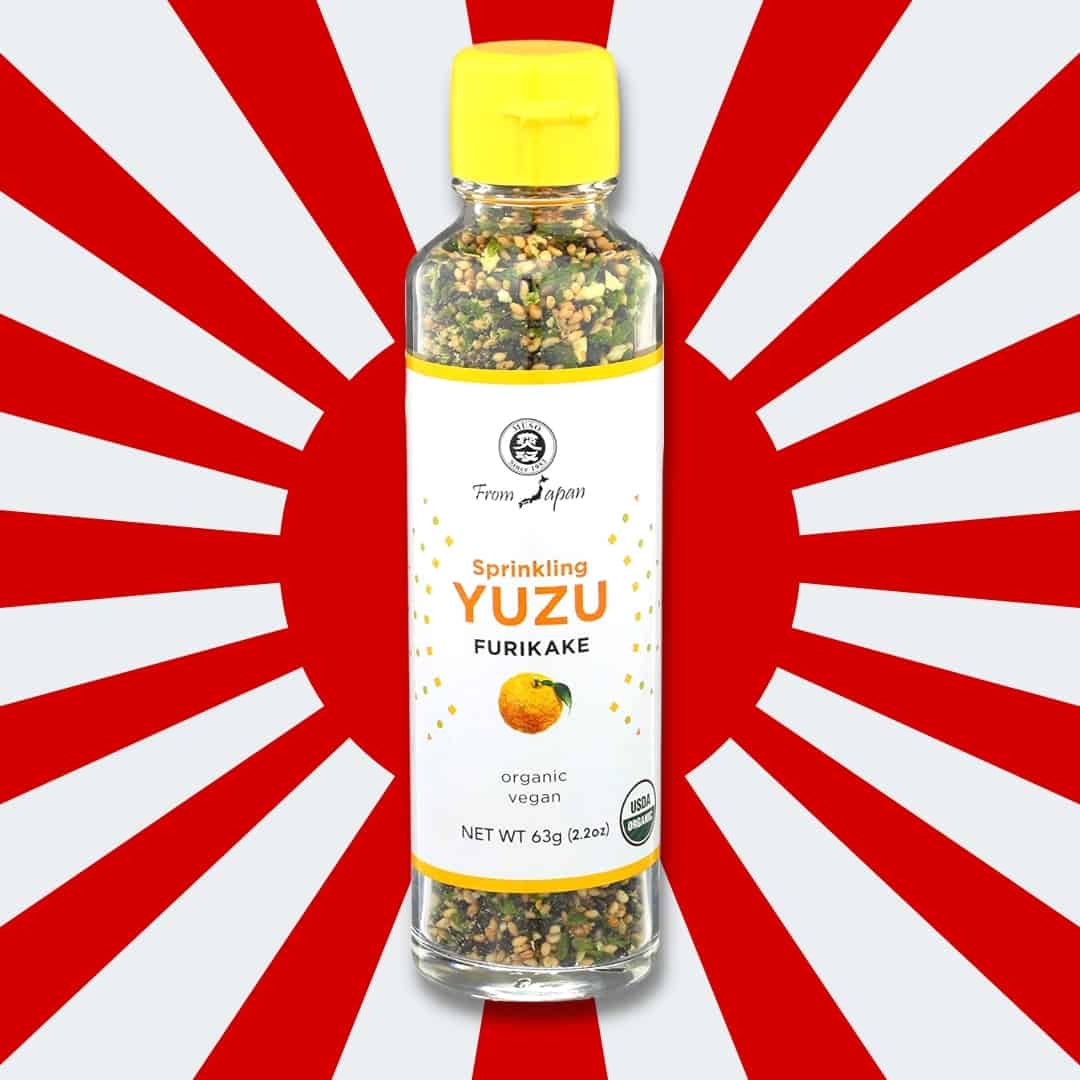
If you are looking for something zingy-flavored that offers a pinch of saltiness and a savory flavor, this furikake seasoning is your best bet. It is best served as topping for steamed fish or cooked meat.
It combines salty bits of seaweed and the flavor of yuzu, a citrus fruit. Yuzu is used as a sour fruity note in very many Japanese dishes.
This one proved one of the best blends I’ve ever come across.
ABSOLUTELY delicious :)
Check prices and availability here
Flavors of furikake seasoning
The following are the major types of furikake seasoning flavors available:
- Wasabi Furikake – it includes dried wasabi as the primary ingredient
- Salmon Furikake – it includes dried salmon crumbs as the primary ingredient
- Shiso Furikake – it is made from dried, crushed, and seasoned reed perilla leaves
- Nori Komi Furikake – it includes tiny pieces of seasoned nori komi seaweed as the primary ingredient
Occasionally, people may add matcha green tea, bonito flakes, sesame seeds, and omelet pieces to their furikake seasoning.
Let’s discuss each variety in detail.
Wasabi Flavor
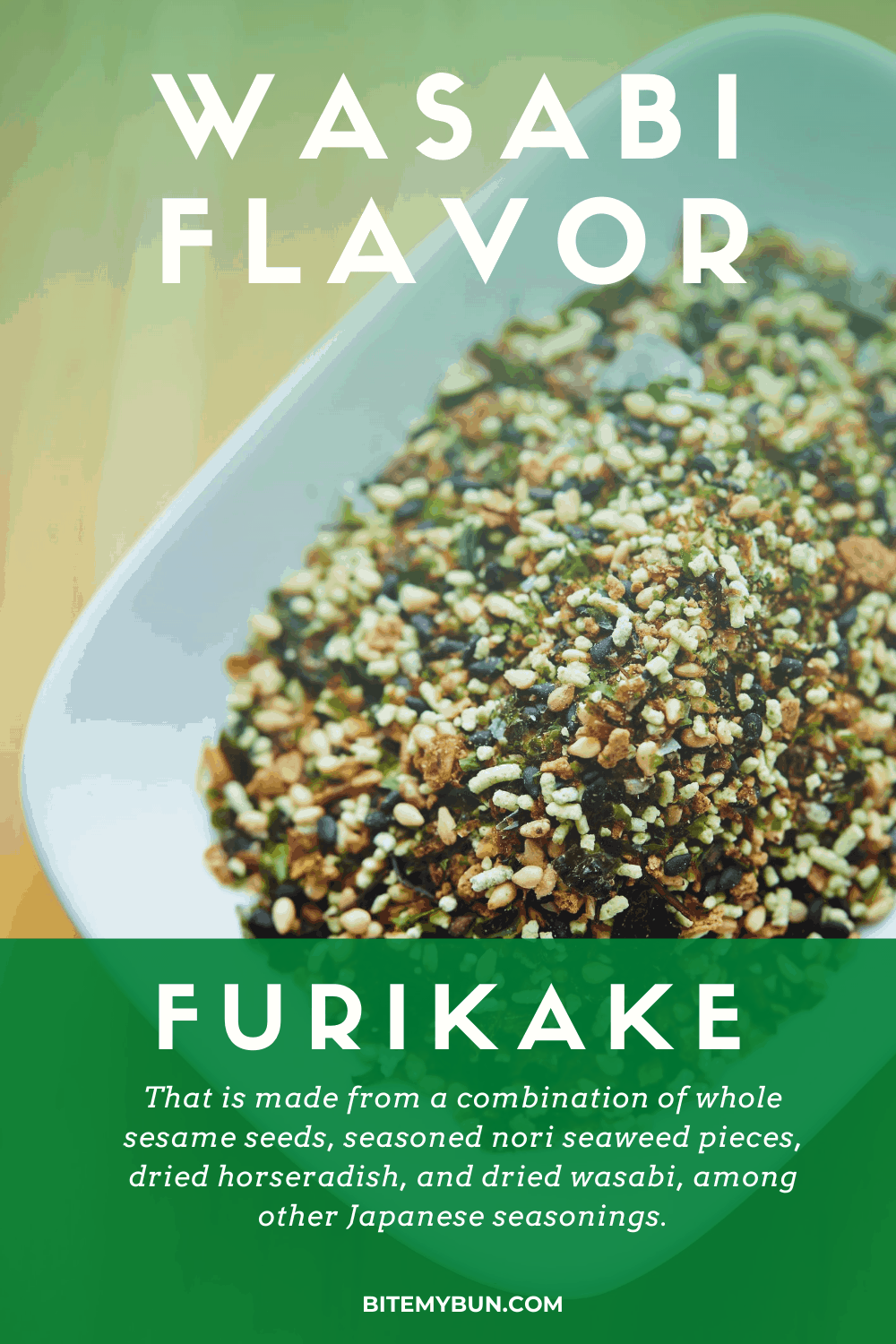
For those who love a little tanginess and spiciness in their food, wasabi furikake is best.
It is made from a combination of whole sesame seeds, seasoned nori seaweed pieces, dried horseradish, and dried wasabi, among other Japanese seasonings.
The best way to get the flavor is to sprinkle it on steamed fish or cooked rice. You can also combine wasabi furikake with green tea and rice to make a hot cup of chazuke soup.
Shiso Flavor
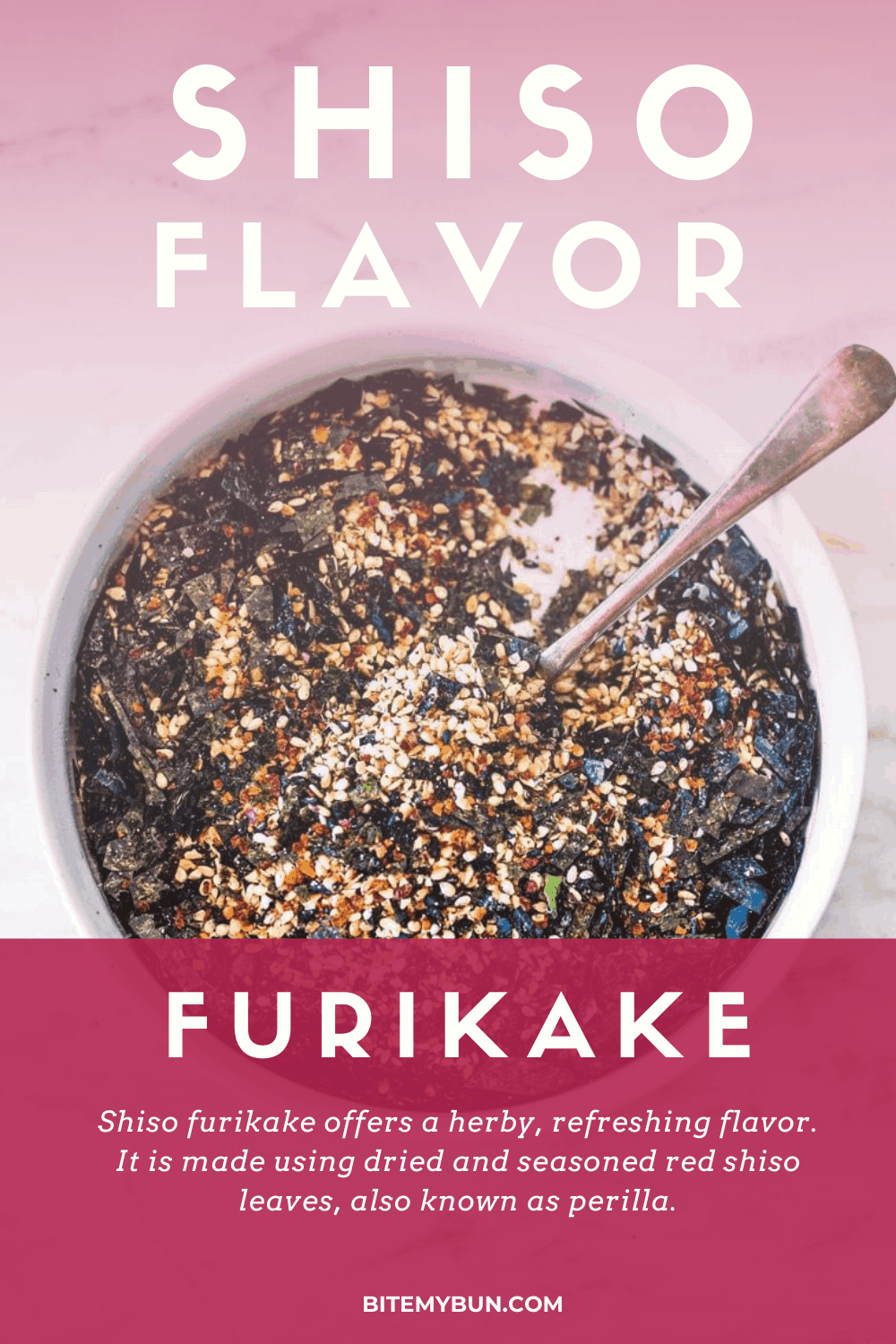
Shiso furikake offers a herby, refreshing flavor. It is made using dried and seasoned red shiso leaves, also known as perilla.
Shiso furikake is known for its vibrant reddish-purple color and its flavor. This type of furikake is often used as a seasoning for onigiri rice balls and sushi rolls.
Also read: how to keep your onigiri as delicious as fresh with these overnight tips
Salmon Flavor
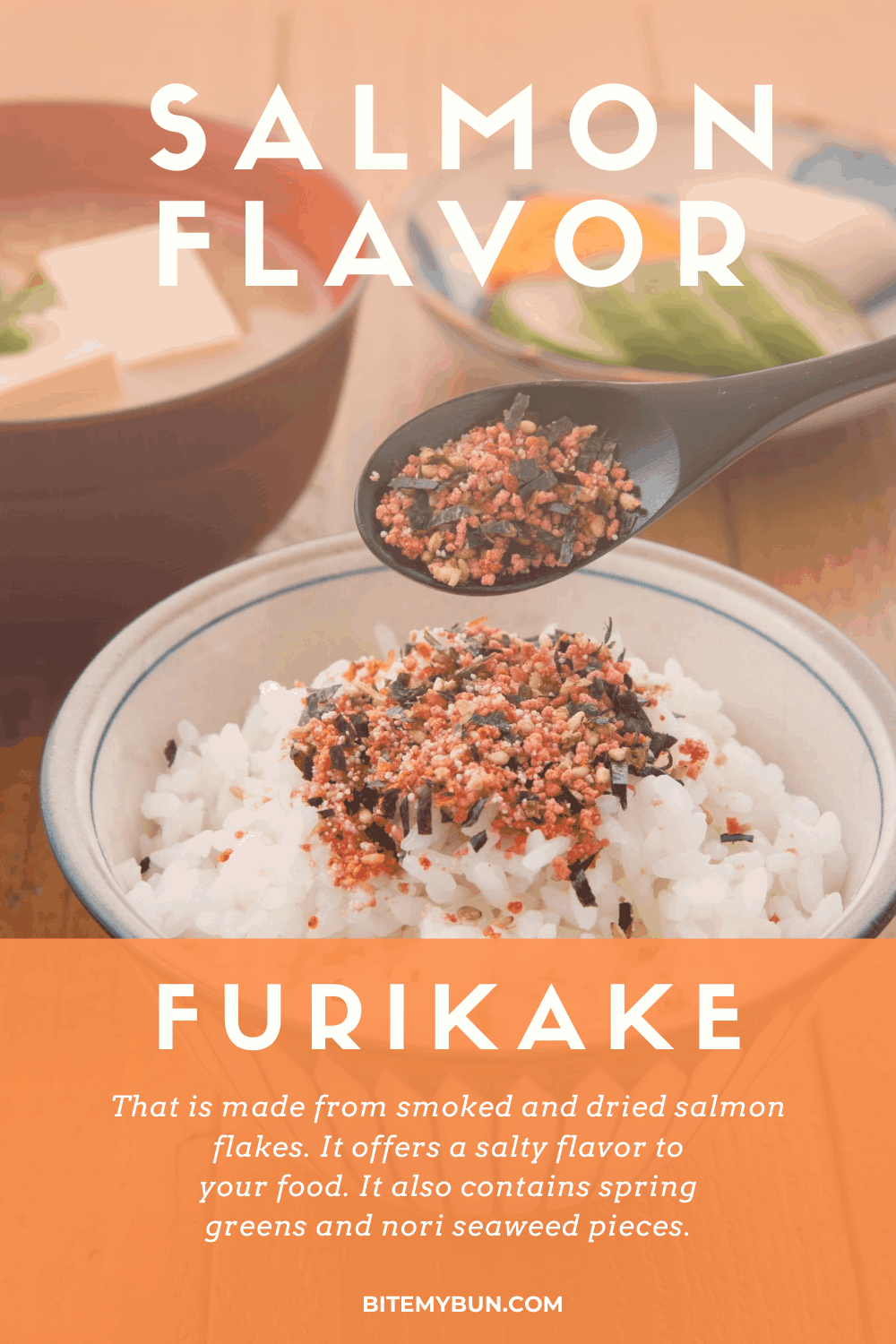
Salmon furikake is made from smoked and dried salmon flakes. It offers a salty flavor to your food. It also contains spring greens and nori seaweed pieces.
It goes well with cooked rice; however, people love making chazuke soup with it. The refreshing tea flavor of the soup significantly offsets the smokiness and saltiness of dried salmon.
Nori Komi Flavor
Nomi komi furikake is made using flakes of nori komi seaweed, bonito fish flakes, whole sesame seeds, powdered egg granules, and other Japanese seasonings.
Nori komi furikake actually is the best flavor to even go well with staple foods such as spaghetti, tofu, and toast. However, Japanese people prefer pairing it with cooked rice.
Its refreshing and savory umami flavor makes the food taste great.
When it comes to using furikake, there are many different flavors, and you have a plethora of options.
Some people love the classic wasabi flavor while others have a thing for the seaweed-sesame seed combo.
You have to try different flavors to see what works for you the best.
The easiest way to use furikake is with cooked rice or with noodles. You can sprinkle it on top of salads and eggs. I have seen people using furikake as a topping on spaghetti, as pasta garnish, on fried chicken, and even teppanyaki popcorn:
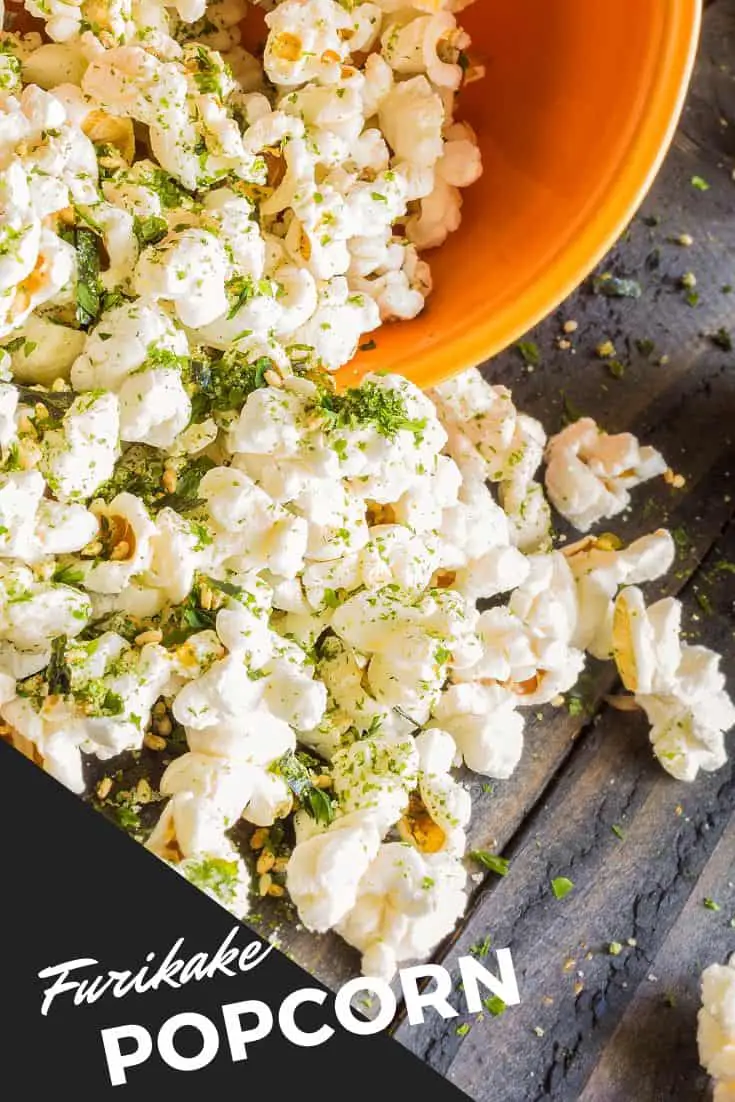
It is all about what your taste buds go for. If you don’t like the flavor, you can add your favorite essentials to the furikake to make it taste as you want it to.
Honestly, I believe that making your own furikake is the best way to get the taste you want.
What’s the most popular furikake?
The most common furikake used in Japan is the Marumiya noritama flavor which uses dried seaweed (nori) and egg (tamago) as the main ingredients, “noritama”. The most common flavor is the nori fume furikake.
Why is furikake so expensive?
Furikake brands are often from Japan and have to be imported, or the brands that make it have to import certain ingredients like katsuobushi from Japan. Japan also isn’t the cheapest country, so it’s more expensive than imported goods from say Thailand, China, or Malaysia.
Final Words
That’s it! I have covered everything you need to know about Japanese furikake seasoning.
From what it is to how to use it, the renowned flavors, the best ones available in the market, and even my homemade recipe, I have told everything about it.
Now, it is time for you to create your own mix and surprise your loved ones with something delicious for dinner.
Check out our new cookbook
Bitemybun's family recipes with complete meal planner and recipe guide.
Try it out for free with Kindle Unlimited:
Read for freeJoost Nusselder, the founder of Bite My Bun is a content marketer, dad and loves trying out new food with Japanese food at the heart of his passion, and together with his team he's been creating in-depth blog articles since 2016 to help loyal readers with recipes and cooking tips.
